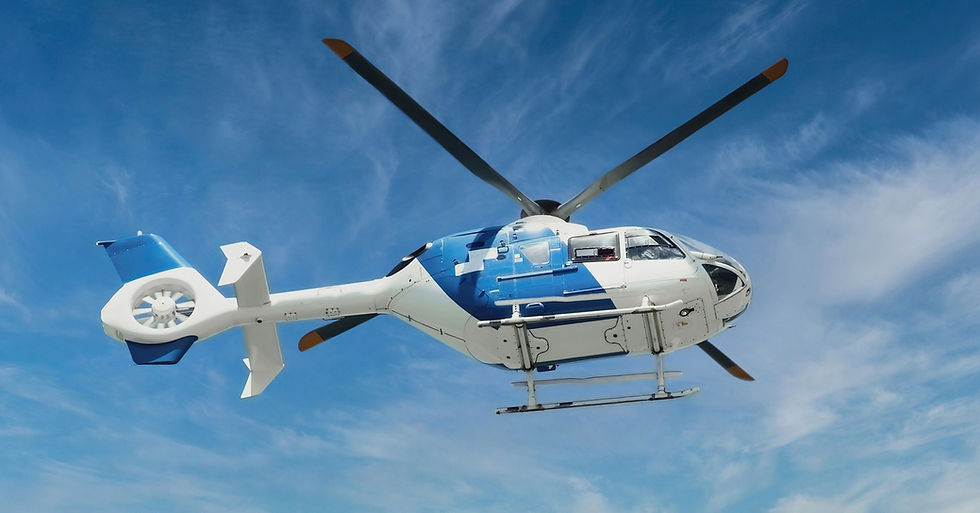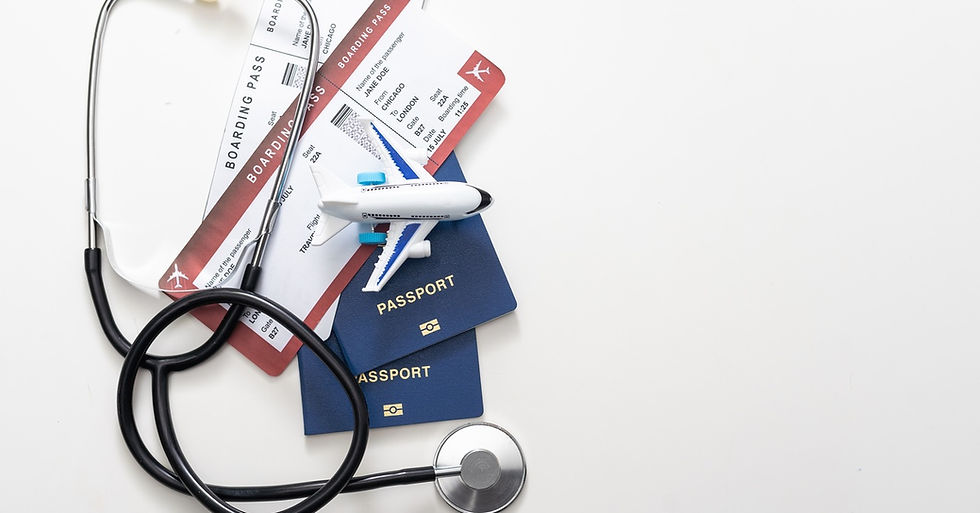A Complete Guide to Air Travel After Surgery
- David Smith

- May 20
- 4 min read

Air travel after surgery is a concern for many patients and their loved ones. The thought of managing the healing process while navigating the complexities of air travel can feel overwhelming. Whether it was a minor or intensive surgery, taking to the skies requires extensive preparation to ensure the patient’s safety and comfort. This complete guide to air travel after surgery aims to provide you with clarity to give you peace of mind as you plan your next journey.
The Recovery Timeline
Healing times vary greatly depending on the type of surgery and your health. Listening to your doctor or surgeon is vital. They’ll offer professional advice on when it’s safe to travel and what precautions are necessary to avoid complications. Factors such as the risk of blood clots, swelling due to cabin pressure, and the possibility of infections play a big role in determining your readiness to fly.
For certain surgeries, like abdominal and cardiovascular procedures, patients must wait before traveling. Remember, scheduling the flight soon after surgery might seem convenient, but prioritizing your health during this period is essential. Follow the instructions of your primary care doctor and wait to fly after a serious surgery.
Safety and Comfort in the Air
Flying after surgery doesn’t have to be uncomfortable or risky if you plan carefully. Before your departure, address any special medical needs. Airlines commonly offer services such as wheelchair assistance or priority seating for people with medical conditions. Speak with the airline directly to ensure you have the support you need.
Hydration is another key consideration. The cabin air in planes is typically dry, which can lead to dehydration, so ensure you are getting enough water, especially during longer flights. Staying hydrated can minimize complications like swelling and general fatigue. If permitted, use hydration packets you can add to the water to replenish your electrolytes while traveling.
Comfortable clothing, preferably loose garments, will also help you feel at ease and reduce the risk of clotting in your lower limbs, especially during long-haul flights. Movement, whenever possible, is equally important. Gentle stretching or short walks up and down the cabin can help manage blood circulation.
Invest in a comfortable neck pillow during the flight to have a better chance of sleep. Lastly, noise-canceling headphones can minimize noise and help you relax during the trip.
The Role of Medical Clearance
One aspect of flying that is frequently overlooked is obtaining proper medical clearance. Most airlines recommend or even require a signed medical certificate if you plan to fly after surgery. This document outlines your ability to travel and any accommodations or precautions necessary during your flight. Your surgeon or primary physician should be your main point of contact for obtaining this certificate.
If you require oxygen or other medical devices in flight, this information should also be included on your medical clearance form. Airlines are typically accommodating when it comes to medical needs, but they do appreciate advanced notice to make arrangements. Communication is key to smooth air travel, so make sure you coordinate with both the airline and your healthcare provider.

Professional Air Ambulance Services
For individuals recovering from complex or high-risk surgeries, professional air ambulance services may provide a safer alternative to commercial flights. These specialized medical flights are equipped with advanced medical equipment, staffed with trained professionals, and designed to cater to specific medical needs.
Air ambulances prioritize patient safety. From managing oxygen levels to monitoring vital signs, they offer an experience far beyond the capacities of a standard airline crew. If you’re unsure if this option is appropriate for your situation, consult with your physician. While air ambulance services are an additional cost, they are invaluable when managing post-surgery travel for patients with complex medical requirements. Notably, some insurance plans may cover part of or all of the expenses associated with such services.
If you’re looking for critical care air ambulance services, consider Blue Sky Aeromedical. We have a team of highly trained medical professionals and state-of-the-art equipment to provide safe and efficient transportation for patients in need of urgent medical care.
Manage Your Medications During Travel
Another critical component of air travel after surgery is medication management. Make sure you have enough medication for the entire trip and some extra in case of delays. Always pack the medication in its original packaging, along with copies of your prescriptions. Most airlines allow essential medication in carry-on bags, even if it exceeds the standard liquid limits.
Ensure your medications are easily accessible during your flight. Cabin conditions and prolonged sitting can sometimes exacerbate discomfort or pain post-surgery, so having a plan for timing your pain medications can keep you comfortable. If your medication requires refrigeration, make arrangements in advance by informing the airline.

Emotional Preparation for Travel
Post-surgery travel isn’t just about your physical health; the emotional toll can also be immense. Nervousness about flying while recovering is normal. Reassure yourself by focusing on the preparation steps you’ve taken and by consulting your care team. Bringing along a family member, friend, or caregiver can also help ease anxiety and reduce the stress of managing everything alone.
Many patients find it helpful to maintain a small kit of comfort items. Compression socks, neck pillows, antibacterial wipes, and soothing music or podcasts can provide an added layer of peace during the flight. Remember, your goal is to make this trip as safe and comfortable as possible for you.
Post-Flight Recovery
The post-surgery care doesn’t stop once the plane lands. After the flight, prioritize rest. Continue to follow any recovery protocols advised by your medical team. Jet lag, changes in time zones, and the physical toll of travel may leave you feeling fatigued. Be kind to yourself and allow ample time to recuperate before jumping back into any strenuous activities.
Pay close attention to any warning signs of complications after your flight, such as swelling, redness, pain in the legs, shortness of breath, or fever. If you notice any of these, seek medical advice immediately. Your post-flight wellness is just as important as your pre-flight preparations.
Prepare for a Smooth Recovery
Preparing physically, mentally, and emotionally to prioritize your health is perhaps the most vital step in air travel after surgery. This complete guide to air travel after surgery serves as a reminder that with the right resources, planning, and support, managing air travel during recovery can be a streamlined and safe experience. Remember, your health is the greatest priority, and taking these precautions ensures a smoother road to healing.




Comments